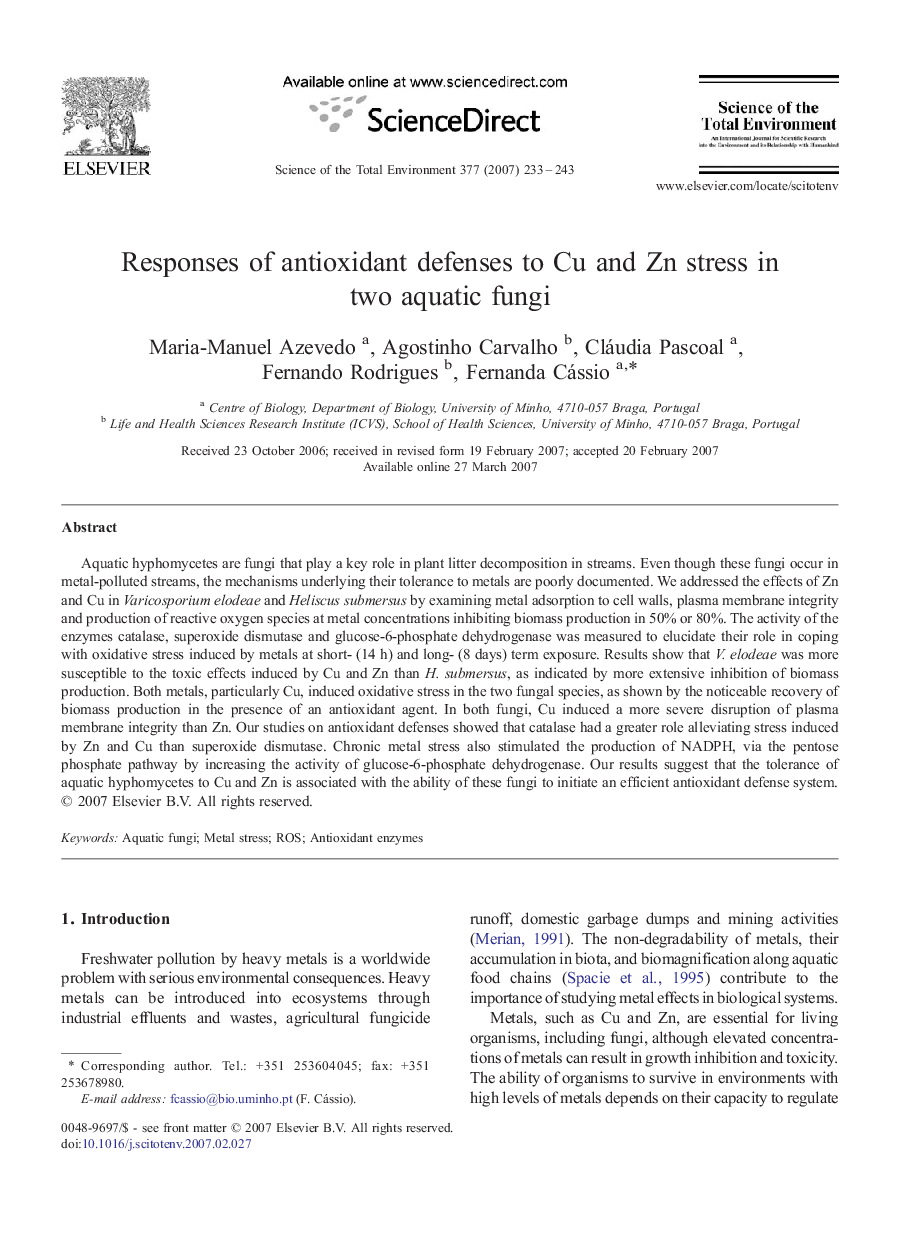| Article ID | Journal | Published Year | Pages | File Type |
|---|---|---|---|---|
| 4433425 | Science of The Total Environment | 2007 | 11 Pages |
Aquatic hyphomycetes are fungi that play a key role in plant litter decomposition in streams. Even though these fungi occur in metal-polluted streams, the mechanisms underlying their tolerance to metals are poorly documented. We addressed the effects of Zn and Cu in Varicosporium elodeae and Heliscus submersus by examining metal adsorption to cell walls, plasma membrane integrity and production of reactive oxygen species at metal concentrations inhibiting biomass production in 50% or 80%. The activity of the enzymes catalase, superoxide dismutase and glucose-6-phosphate dehydrogenase was measured to elucidate their role in coping with oxidative stress induced by metals at short- (14 h) and long- (8 days) term exposure. Results show that V. elodeae was more susceptible to the toxic effects induced by Cu and Zn than H. submersus, as indicated by more extensive inhibition of biomass production. Both metals, particularly Cu, induced oxidative stress in the two fungal species, as shown by the noticeable recovery of biomass production in the presence of an antioxidant agent. In both fungi, Cu induced a more severe disruption of plasma membrane integrity than Zn. Our studies on antioxidant defenses showed that catalase had a greater role alleviating stress induced by Zn and Cu than superoxide dismutase. Chronic metal stress also stimulated the production of NADPH, via the pentose phosphate pathway by increasing the activity of glucose-6-phosphate dehydrogenase. Our results suggest that the tolerance of aquatic hyphomycetes to Cu and Zn is associated with the ability of these fungi to initiate an efficient antioxidant defense system.
